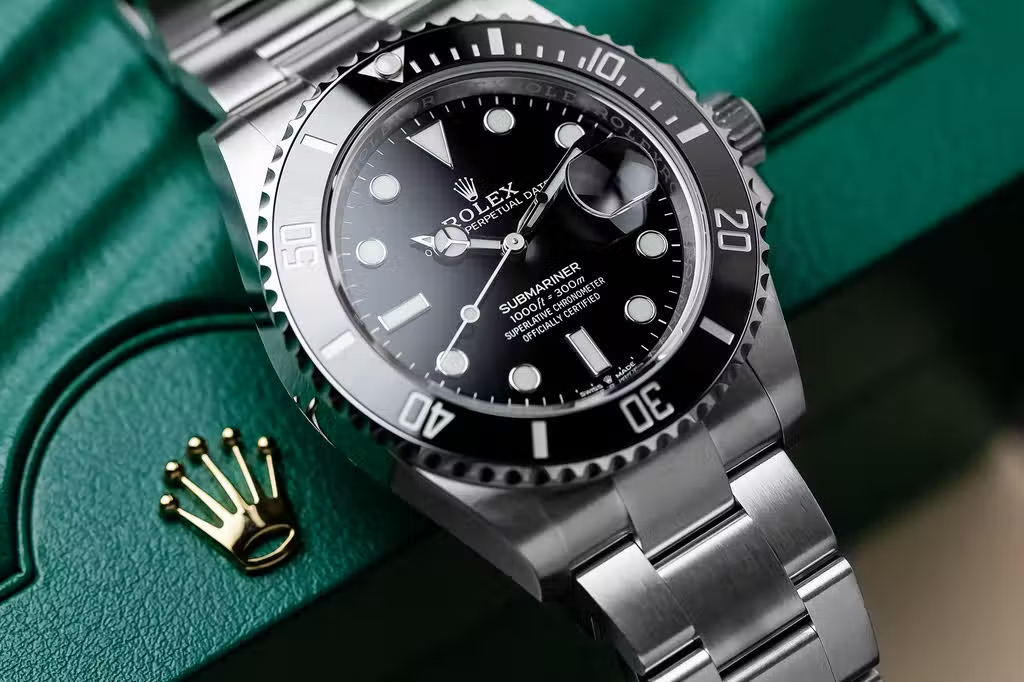Regarding investors in luxury Swiss timepieces, the present market patterns indicate a noteworthy change: the prices of pre-owned, or secondhand, watches continue to drop. For fans of high-end brands like Rolex and others, who have historically experienced supply shortages and lengthy waitlists, this change is especially relevant. As to the most recent data from Morgan Stanley, there has been a price decrease for the ninth consecutive quarter in the WatchCharts Overall Market Index, which monitors a carefully chosen assortment of 60 high-end Swiss timepieces from ten prominent brands on the secondary market. When compared to the peak levels recorded at the height of the epidemic, this continuing trend shows a significant deviation.
According to specific statistics from 2024’s second quarter, prices have dropped by 1.2% year over year and by 2.1% from the year’s first quarter. With very few luxury watch companies managing to preserve or even grow their market prices, this steady declining trend in the secondary market underscores a broader tendency that affects most luxury watch brands. Some brands are doing worse than others, according to the research, even if the secondary market for luxury timepieces is declining overall.
Montblanc and Hamilton, with minor improvements of 2.4% and 2.2%, respectively, are among the few brands that have managed to witness price increases in the secondary market. Conversely, there have been significant price reductions of 5.3% to 12.5% for a number of luxury brands, including A. Lange & Söhne, Breitling, Omega, Rolex, and Audemars Piguet. With the brand’s reputation for consistently maintaining high market values in the face of economic uncertainties, Rolex in particular has experienced a 7.2% fall in its secondhand prices. This is a substantial shift.
There’s been more pressure on Rolex lately, which was once thought to be a stable brand in the high-end watch industry. Rolex watches have historically been immune to large price reductions due to their strong brand recognition, high demand, and lengthy waitlists. The consequences of the wider economic crisis and changing consumer behavior, however, may be felt even by Rolex, according to recent market data.
A number of significant causes are responsible for the decline in Rolex’s secondary market prices. The practice of dealers buying new Rolex watches and reselling them at a premium on the secondary market, or “watch flipping,” has become less profitable. This is one significant aspect. The financial benefit of flipping Rolex watches has decreased as their retail prices have increased. Because flipping has become less profitable as a result of this change, new Rolex watches are now more readily available at authorized dealers (ADs).
Morgan Stanley conducted research and used two primary indicators to assess how these market movements affected Rolex. An indicator of this would be the size of the gray market, the aftermarket for recently manufactured Rolex watches. The examination discovered a decrease in the amount of Rolex watches available on the gray market. The widening difference between rising retail prices and declining gray market prices is thought to be the cause of this decline in flipping profitability. As a consequence, new Rolex watches are now easier to find in retail settings.
The second indicator examined was the wait times for popular Rolex models at authorized dealers. Wait times serve as a critical measure of supply and demand dynamics, reflecting the availability of specific models. Due to the challenges in obtaining comprehensive data on wait times, WatchCharts relied on data sourced from the Rolex community on a popular subreddit to estimate these times. The analysis found that wait times for certain Rolex models have been decreasing, indicating that these watches are becoming more readily available at authorized dealers.
Both the secondary and retail markets for luxury timepieces will be significantly impacted by these trends. Collectors and investors alike will have to adjust to the changing market as the number of new Rolex watches available rises and secondary market values keep falling. A wider shift in the luxury watch market that may impact future investment strategies is also indicated by the decline in secondary market prices, which may present possibilities for buyers to purchase desired Rolex models at more favorable rates.
The price policies and inventory control procedures of authorized dealers may also be impacted by the shifts in the market dynamics. Collectors, investors, and dealers alike will need to tread carefully across a shifting landscape as the luxury watch business adapts to these new trends. The necessity of remaining knowledgeable and adaptable in reaction to these changes is shown by the continuous changes in supply, demand, and price within the luxury watch market.
According to the most recent data, the luxury watch sector is undergoing a time of change, presenting both fresh chances and challenges for high-end companies like Rolex. The market dynamics are changing significantly as new timepieces become more readily available at retail levels and as secondhand costs continue to drop. Understanding and adjusting to these developments will be essential for anyone involved in the luxury watch market as it continues to shift.
If you like the article please follow on THE UBJ.
